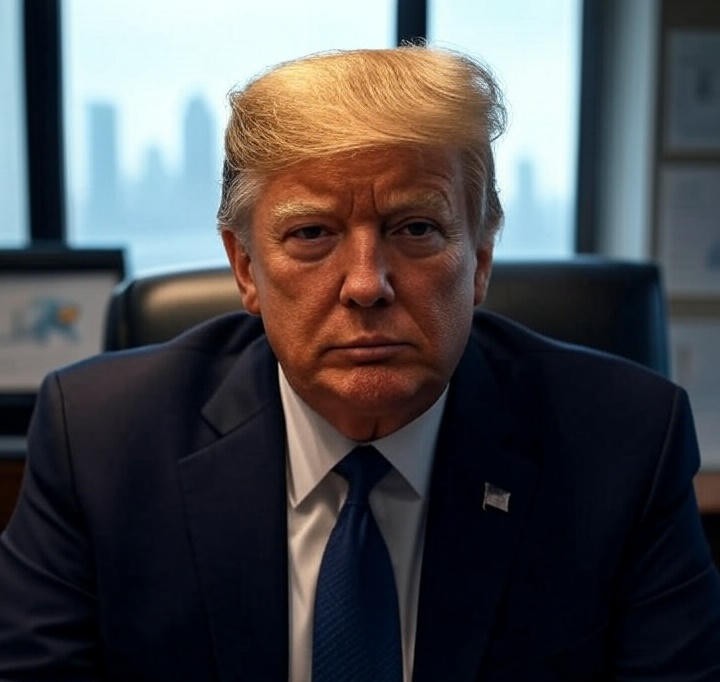In recent news a major move in global trade has caught the world’s attention. Former U.S. President Donald Trump announced a 90-day pause on tariffs especially targeting car imports and trade tensions with other countries. This move had an immediate and powerful effect on global markets especially in the auto and manufacturing sectors. European carmakers responded quickly promising more investments in the United States while a new trade deal between the U.S. and Vietnam brought fresh optimism to investors.

What Are Tariffs?
Tariffs are taxes placed on imported goods. When one country puts a tariff on goods from another country it becomes more expensive to buy those goods. The idea is to protect domestic industries from foreign competition. But tariffs can also lead to trade wars where countries keep raising taxes on each other’s goods harming both economies.
During his presidency Donald Trump was known for using tariffs as a tool to negotiate better trade deals for the U.S. He believed that putting pressure on trading partners would help fix what he called “unfair” trade relationships.
Trump’s 90-Day Tariff Pause
Trump’s new 90-day pause in 2025 is a temporary halt on additional tariffs especially on European car imports. This move is seen as a step back from escalating trade tensions giving room for negotiations and possibly avoiding more economic damage.
This pause came at a time when global economies are trying to recover from earlier economic slowdowns. The 90-day break is meant to allow time for U.S. and foreign officials to discuss fair trade terms without adding new costs to consumers or hurting industries.
How Did European Carmakers React?
European car manufacturers, such as Volkswagen, BMW and Mercedes-Benz have a lot to lose if the U.S. imposes high tariffs on cars made in Europe. In response to Trump’s announcement many of these companies offered to increase their investments in the U.S.. This means building more factories and creating more jobs for American workers.
For example:
- BMW announced plans to expand its South Carolina plant which already exports cars to other countries.
- Volkswagen discussed increasing production capacity in Tennessee.
- Mercedes-Benz talked about new partnerships with U.S. companies to strengthen local manufacturing.
These promises of investment are being seen as a smart strategy by carmakers. They hope that by showing their commitment to the U.S. economy, they can avoid future tariffs.
The U.S.-Vietnam Trade Deal
In addition to the 90-day pause, the U.S. also signed a new trade agreement with Vietnam. This deal focuses on reducing trade barriers between the two nations and increasing cooperation in industries such as technology, textiles, and agriculture.
Vietnam has become an important trade partner in recent years. Many American companies are moving their supply chains to Vietnam to reduce their dependence on China. The new deal is expected to:
- Increase American exports to Vietnam.
- Help Vietnamese companies access U.S. markets more easily.
- Create jobs in both countries.
Market experts saw this deal as a sign that the U.S. is serious about building strong ties with Asia, outside of China. This helped improve investor confidence in both the U.S. and Southeast Asian markets.
Impact on Global Markets
The tariff pause and trade deal had a quick and positive impact on financial markets:
- Stock markets rose globally, especially in Europe and Asia.
- Auto stocks in Europe jumped, as investors hoped that U.S. tariffs would be avoided.
- Vietnam’s stock market saw gains, reflecting new business opportunities from the trade deal.
- The U.S. dollar remained stable, while investors shifted some of their attention back to equity markets from safe-haven assets like gold.
Analysts believe that even though the tariff pause is temporary, it has sent a signal that the U.S. is open to negotiation, which helps reduce fear and uncertainty in the markets.
Why It Matters for Everyday People
You might wonder—why should we care about all of this?
Trade and tariffs affect what we buy, how much we pay, and where products come from. If tariffs go up, prices of imported cars, electronics, and clothes can rise. If trade deals are signed, more goods can flow freely, and companies can offer better prices and create more jobs.
Also, when companies invest more in manufacturing locally (like the European carmakers in the U.S.), it can boost local economies, create more employment, and strengthen the overall economy.
What Happens After 90 Days?
The 90-day pause is just a window of time. After that, the U.S. could still impose new tariffs if no agreement is reached. However, both sides have a strong reason to avoid that:
- The U.S. wants to avoid hurting its own consumers and industries.
- Foreign countries want to keep exporting to the U.S. without high taxes.
So, this time will likely be used to negotiate better trade terms, modernize trade laws, and avoid a full-blown trade war.
Final Thoughts
Trump’s 90-day tariff pause and the new U.S.-Vietnam trade deal may seem like just political news, but their effects are real and important. These moves have already boosted confidence in the market and brought temporary peace in the ongoing global trade tensions.
European carmakers are using this moment to deepen their roots in the American economy and Vietnam is stepping up as a new trade ally. While this does not mean all trade issues are solved it’s a positive sign of cooperation and economic strategy in a world that’s often divided by trade disputes.
If the momentum continues we could see more deals fewer tariffs and a healthier global economy for everyone.
